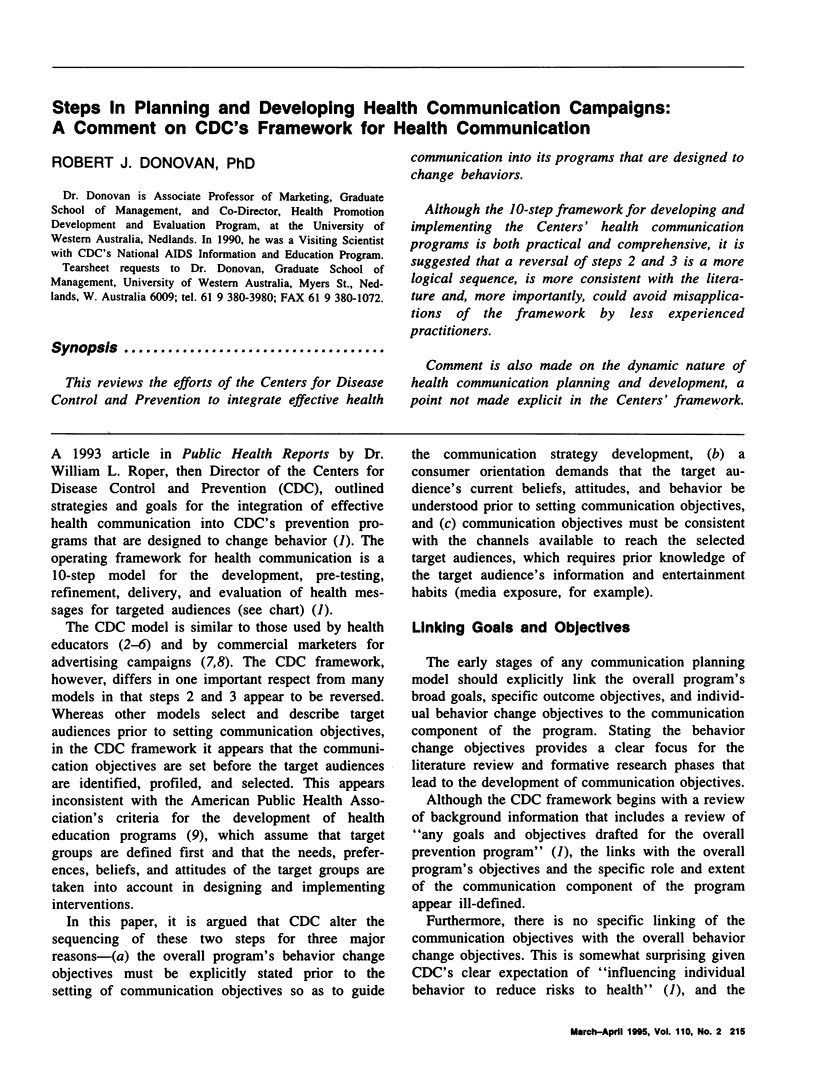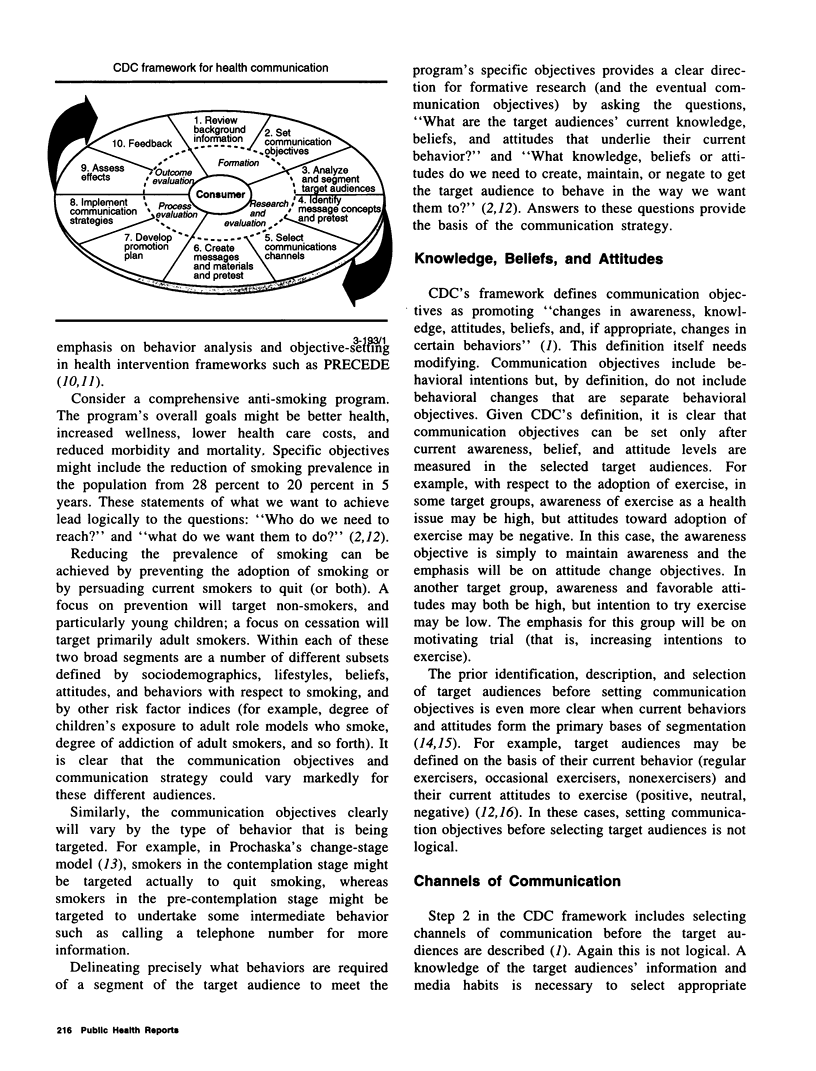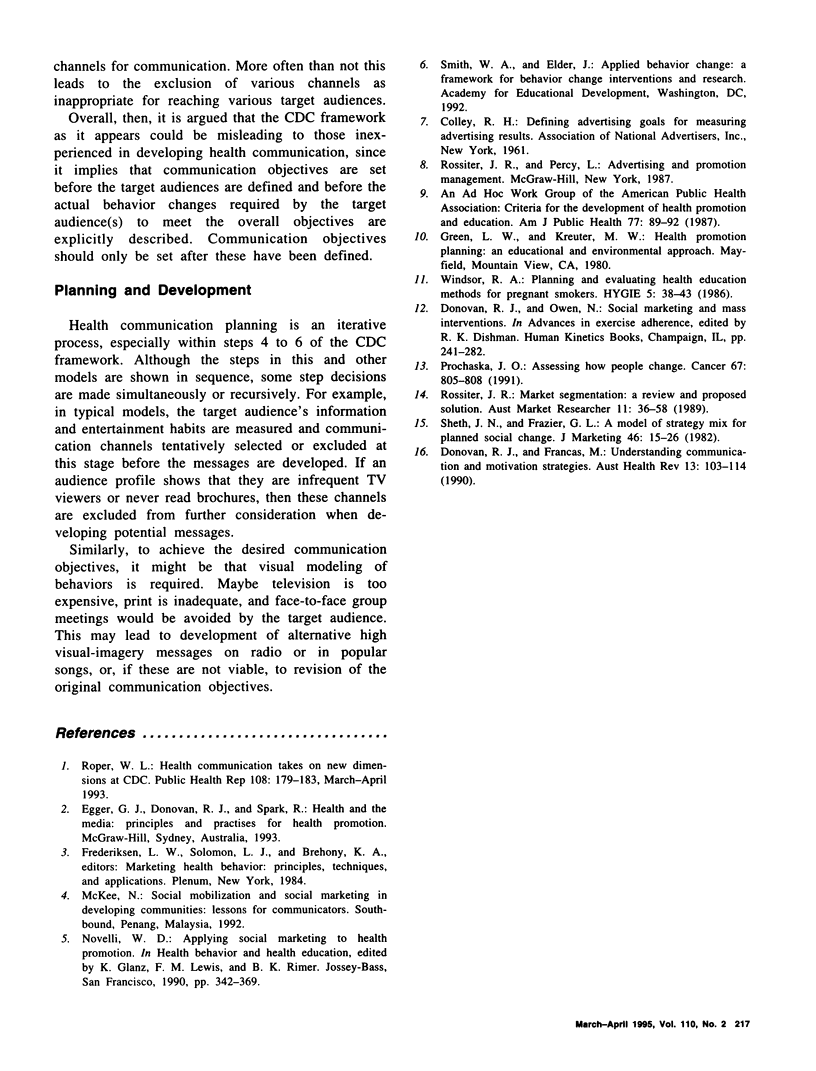Abstract
This reviews the efforts of the Centers for Disease Control and Prevention to integrate effective health communication into its programs that are designed to change behaviors. Although the 10-step framework for developing and implementing the Centers' health communication programs is both practical and comprehensive, it is suggested that a reversal of steps 2 and 3 is a more logical sequence, is more consistent with the literature and, more importantly, could avoid misapplications of the framework by less experienced practitioners. Comment is also made on the dynamic nature of health communication planning and development, a point not made explicit in the Centers' framework.
Full text
PDF


Selected References
These references are in PubMed. This may not be the complete list of references from this article.
- Prochaska J. O. Assessing how people change. Cancer. 1991 Feb 1;67(3 Suppl):805–807. doi: 10.1002/1097-0142(19910201)67:3+<805::aid-cncr2820671409>3.0.co;2-4. [DOI] [PubMed] [Google Scholar]
- Prochaska J. O. Assessing how people change. Cancer. 1991 Feb 1;67(3 Suppl):805–807. doi: 10.1002/1097-0142(19910201)67:3+<805::aid-cncr2820671409>3.0.co;2-4. [DOI] [PubMed] [Google Scholar]
- Roper W. L. Health communication takes on new dimensions at CDC. Public Health Rep. 1993 Mar-Apr;108(2):179–183. [PMC free article] [PubMed] [Google Scholar]
- Roper W. L. Health communication takes on new dimensions at CDC. Public Health Rep. 1993 Mar-Apr;108(2):179–183. [PMC free article] [PubMed] [Google Scholar]
- Windsor R. A. An application of the PRECEDE model for planning and evaluating health education methods for pregnant smokers. Hygie. 1986 Sep;5(3):38–44. [PubMed] [Google Scholar]


